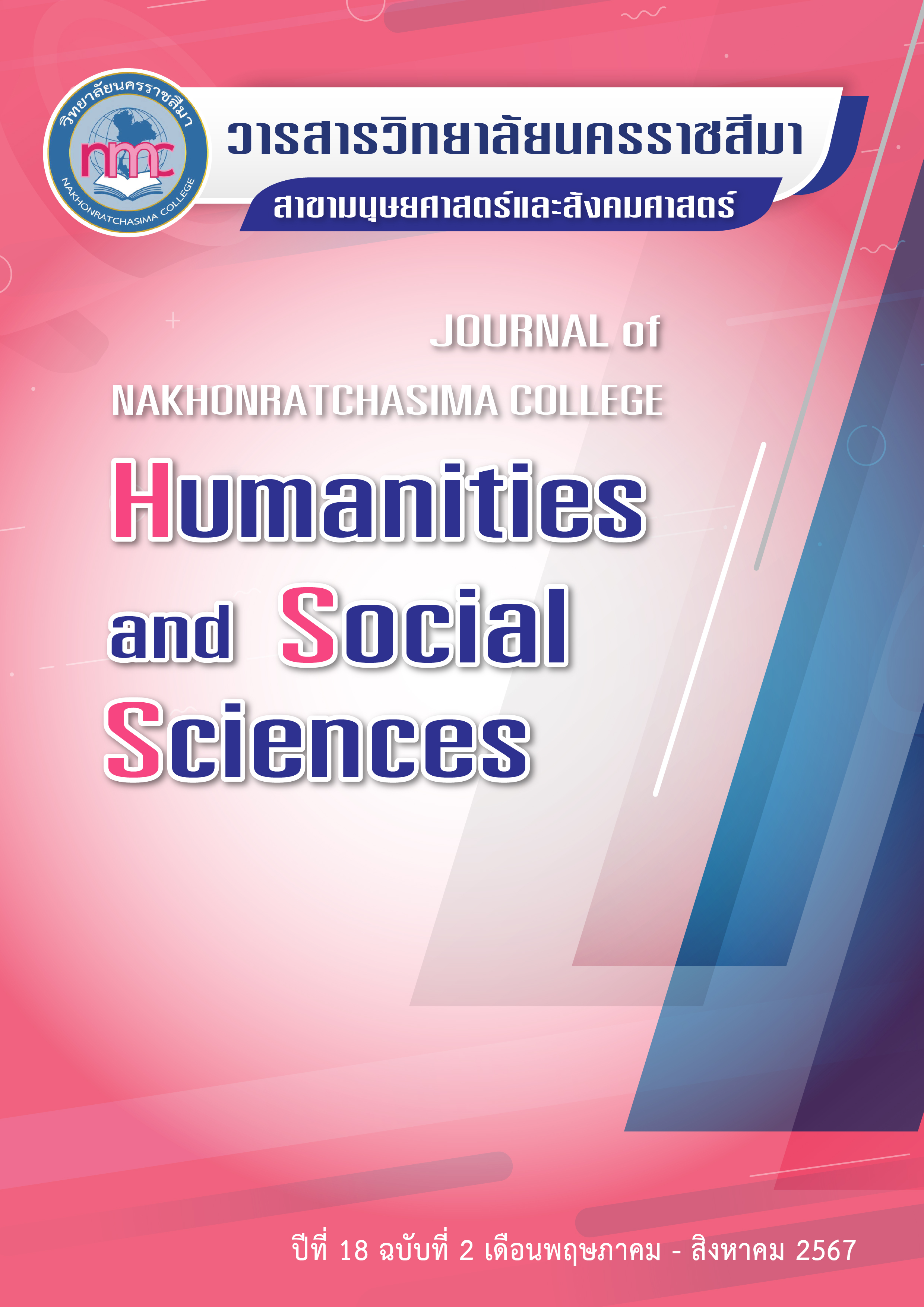The Study of Achievement and Satisfaction on Basketball Using 5E Instructional Model of the First-Year Students of Electrical Major in GUANGXI Polytechnic Vocational and Technical College
คำสำคัญ:
Achievement, satisfaction, 5E Instructional Modelบทคัดย่อ
The purposes of this research were to (1) compare the learning achievement in Basketball between before and after learning using 5E instructional model (2) compare the learning achievement in Basketball after learning using 5E instructional model with the 75% criterion (3) study the students’ satisfaction on basketball using 5E instructional model. The sample was 25 first year students, majoring in electrical engineering at Guangxi Polytechnic. who were conducted by simple random sampling. Research instruments included of 1) the management plans of "5E" Instructional Model in the basketball class 2) the Basketball learning achievement test which had the Item Difficulty value between 0.40-0.67, Discrimination value between 0.20-0.67, and Lovett reliability value 0.83; the satisfaction questionnaire with IOC between 0.60-1.00, and reliability 0.74. Pre-test - post-test design is research design. The statistics used for data analysis are mean, percentage, standard deviation, and T-test.
The results are as follows:
- The students’ learning achievement on Basketball after using 5E instructional
model on Basketball is higher than that before the test, which is statistically significant at 0.01 level and higher than 75% full mark standard.
- The students’ basketball skills after using 5E instructional model in basketball class is higher than that before, which is statistically significant at 0.01 level and higher than the 75% full mark standard.
- The students’ satisfaction to the 5E instructional model is at the highest level. The average score of the questionnaire was 4.84, indicating the highest degree of satisfaction.
เอกสารอ้างอิง
Hu,J.H., & Gao,C.(2017). Evaluation of teaching mode in China's teaching practice and its foreign research progress. Chemistry Education, 2017,38(01):5-9.DOI:10.13884 /j.1003-3807hxjy.2015030117.
Man Changhui. (2019). Analysis on the main influencing factors of sports behavior of Contemporary female college students. World of Sports (Academic Edition).
Meng Shangfu. (2018). A comparative study on the influence of three sports optional Courses on the health and physical fitness of non-sports college students. Beijing: Beijing Sport University.
Wang Xiaoming. (2018). Current situation analysis and correlation study of screen time And physical health of college students. Chengdu: Sichuan Normal University.
Wu,C.J., &Zhang,M.(2010). The connotation, examples and essential characteristics of the "5E" teaching model of biology in the United States. Curriculum, teaching materials, teaching methods.
Xie Mingye, Zhai Qiang. (2012). An exploratory study on physical education teaching cohesion during the sensitive period of motor skill development. Journal of Northeast Agricultural University (Social Science Edition).
Zhang Chunyan.(2014). Sensitive period of physical fitness and exercise methods for adolescents. Journal of China Youth University for Political Sciences.
Zhu Jin, Meng Baoan. (2003). On the Reform of Physical Education in Colleges and Universities under the Thought of Lifelong Physical Education [J]. Journal of Northwestern Polytechnical University (Social Science Edition).
ดาวน์โหลด
เผยแพร่แล้ว
รูปแบบการอ้างอิง
ฉบับ
ประเภทบทความ
สัญญาอนุญาต
จรรยาบรรณผู้เขียนบทความ
ผู้เขียนบทความต้องรับรองว่าบทความนี้ไม่เคยตีพิมพ์ในวารสารใดหรือสิ่งพิมพ์อื่นๆ มาก่อน ต้องไม่คัดลอกผลงานผู้อื่นมาปรับแต่งเป็นบทความของตน และไม่ได้อยู่ระหว่างการเสนอเพื่อพิจารณาตีพิมพ์ อีกทั้งยอมรับหลักเกณฑ์การพิจารณาและการตรวจแก้ไขบทความต้นฉบับโดยกองบรรณาธิการวารสารวิทยาลัยนครราชสีมา สาขามนุษยศาสตร์และสังคมศาสตร์
บทความทุกเรื่องได้รับการตรวจพิจารณาทางวิชาการโดยผู้ทรงคุณวุฒิที่มีประสบการณ์และมีความเชี่ยวชาญตรงตามสาขาของบทความ ซึ่งผู้เขียนต้องแก้ไขตามคำแนะนำของผู้ทรงคุณวุฒิภายในระยะเวลาที่กำหนด หากไม่เป็นไปตามกำหนดกองบรรณาธิการขอสงวนสิทธิ์และยกเลิกการตีพิมพ์โดยจะแจ้งให้ทราบต่อไป
ข้อความที่ปรากฏในบทความของวารสารนี้เป็นความคิดเห็นของผู้เขียนซึ่งไม่เกี่ยวข้องกับวิทยาลัยนครราชสีมาแต่อย่างใด และกองบรรณาธิการขอสงวนสิทธิ์ในการพิจารณาและตรวจประเมินบทความเพื่อตีพิมพ์ในวารสารของวิทยาลัยนครราชสีมา สาขามนุษยศาสตร์และสังคมศาสตร์



